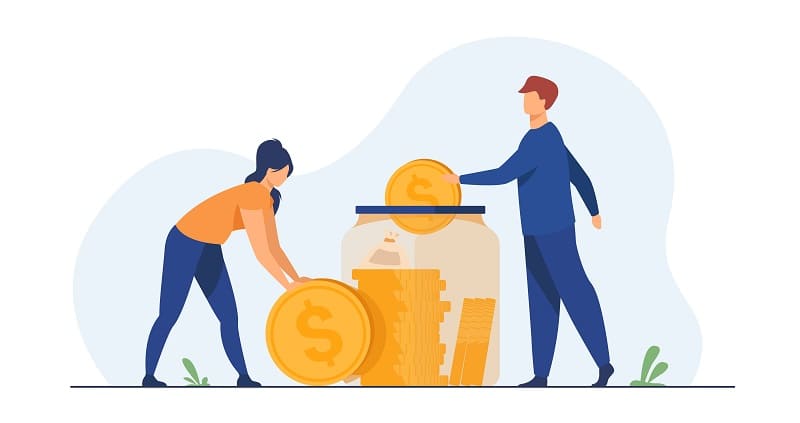Like mutual funds, exchange-traded funds (ETFs) are deposit investment security. ETFs frequently track a particular industry, index, commodity, or other asset. And they can be bought or sold on a stock exchange similar to generic equities, unlike mutual funds. ETFs can track a broad and varied collection of equities and the price of a single commodity. The ETFs may use specific investment methods.
Because it is- exchanged on an exchange like stocks, it is also known as an ETF as an exchange-traded fund. Since he has- purchased shares of the ETF during the trading day, the price of the shares will fluctuate. Unlike mutual funds, which are not exchange-traded, these are- offered for sale. And which only does one daily trading after the markets have closed. ETFs are frequently more cheap and liquid than mutual funds.
Unlike stocks with only one underlying asset, ETFs hold different underlying assets. An ETF might be a well-liked option for diversification because it contains a variety of assets. Thus, diverse investments, including stocks, commodities, bonds, or a combination of expenditures, can find in ETFs. An ETF may own hundreds or thousands of equities from different industries, or it may be- confined to a single sector or industry. While some funds primarily concentrate on U.S. offers, others have a worldwide perspective. For instance, it would include equities of various banks from throughout the industry in banking-focused ETFs.
How do ETFs function?
Exchange-traded funds function as follows: The fund manager creates a fund to monitor the performance of the underlying assets. Additionally, it keeps control of those assets before offering investors shares of the fund. The underlying assets of an ETF are- not owned by the shareholders. Somewhat, they dominate a portion of the ETF. A lump-sum dividend payment can made to- the shareholders of the ETF that follows the stock index. For the equities that make up the index, reinvest.
As a result, the value of an underlying asset or index can now be- reflected in ETFs. Like a collection of equities like the S&P 500 or a commodity like gold. Typically, they are- traded at a profit level. It is less than the underlying asset. Because of factors such as- expense, the long-term return of an ETF will differ from that of its underlying asset.
A concise summary of how ETFs operate is:
- An ETF provider compiles a basket of assets with a distinctive ticker by considering the entire universe of credits. Such as stocks, bonds, commodities, or currencies.
- Just like purchasing shares of a corporation, investors can gain a contribution to that basket.
- Like stocks, buyers and sellers trade ETFs on the exchange throughout the day.
How to purchase ETFs
Exchange-traded funds can be- purchased in a variety of ways. And how you do it is mostly a matter of preference. ETF investing is only a few clicks away for active investors. Although the number of offers (and associated costs) will vary between brokers, these assets make up a regular offering among online brokers. On the opposite end of the scale, Robo-advisors build their portfolios using inexpensive ETFs and provide hands-off investors with access to these assets. One development that has benefited ETF buyers is that several large brokerages have reduced their commissions on the trading of stocks, ETFs, and options to $0.
-Either independently or through a Robo-advisor, open a brokerage account.
A brokerage account is required if you’re prepared to invest independently in ETFs. They keep your investments in brokerage accounts, but just because you have one does not guarantee you have any expenditures. You can start investing in ETFs once you open an account.
-Locate the ETFs you want to buy.
Although there are unusual ETFs available, this isn’t as difficult as it sounds. It’s challenging to focus. To- identify ETFs with minimal fees and funds in specific industries, you can use online screeners. Or ETFs that emphasize social responsibility or the environment.
-Acquire the ETF.
Navigate to the specific ETF you want to buy using the trading feature of your brokerage, then execute the trade. Before making your order official, double-check it.
-Keep holding the ETF.
Your investment approach will determine how long you keep an ETF. However, retirement investment is sometimes a waiting game where- the longer you keep it, the better. Compound interest works in such a way- that the longer you hold on to the ETF, the more your interest will continue to grow.
ETF experts (pros)
Exchange-traded funds have been immensely familiar among investors because of their simplicity, relative affordability, and availability of the diversified product. As for the benefits:
- ETFs offer greater diversification than buying individual stocks. Investing in ETFs will give you instant exposure to diversified equities instead of buying a few individual stocks.
- In contrast to managed funds, exchange-traded funds (ETFs) aim to mimic an index’s performance. Rather than outperform it, providing more predictable returns.
- ETFs typically cost less than managed funds since they naturally track the index. Whereas it dominates, fund managers frequently charge you extra to choose investments. To- outperform an index or benchmark.
- When choosing investments to outperform an index or benchmark, managed fund managers frequently charge you more.
- You have freedom with ETFs because they let you enter and exit at any moment.
Cons of ETF
Exchange-traded funds aren’t flawless, yet they may be effective for some investors. Cons are:
- The expense ratio may not be the ultimate cost of an ETF. ETFs may incur commission charges from online brokers because they are exchange-traded.
- However, not all brokers have reduced their ETF commissions to zero.
- Potential liquidity problems exist, and when it comes time to- sell, your options will depend on market conditions. However, less commonly traded ETFs may be more difficult to advertise.
- The ETF will shut down. It occurs because a fund hasn’t accrued enough assets to meet operating expenses.
- The major drawback of a closed ETF is that investors are- forced to sell earlier than they had hoped and maybe at a loss.

